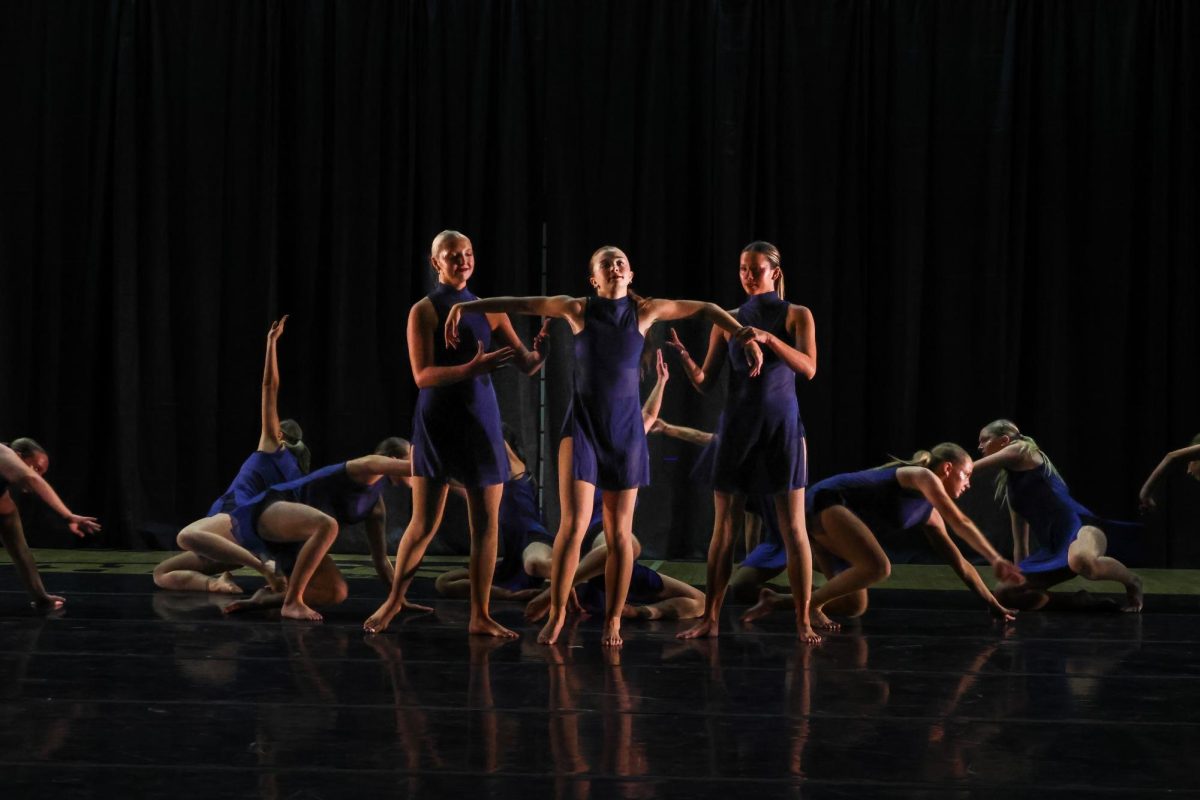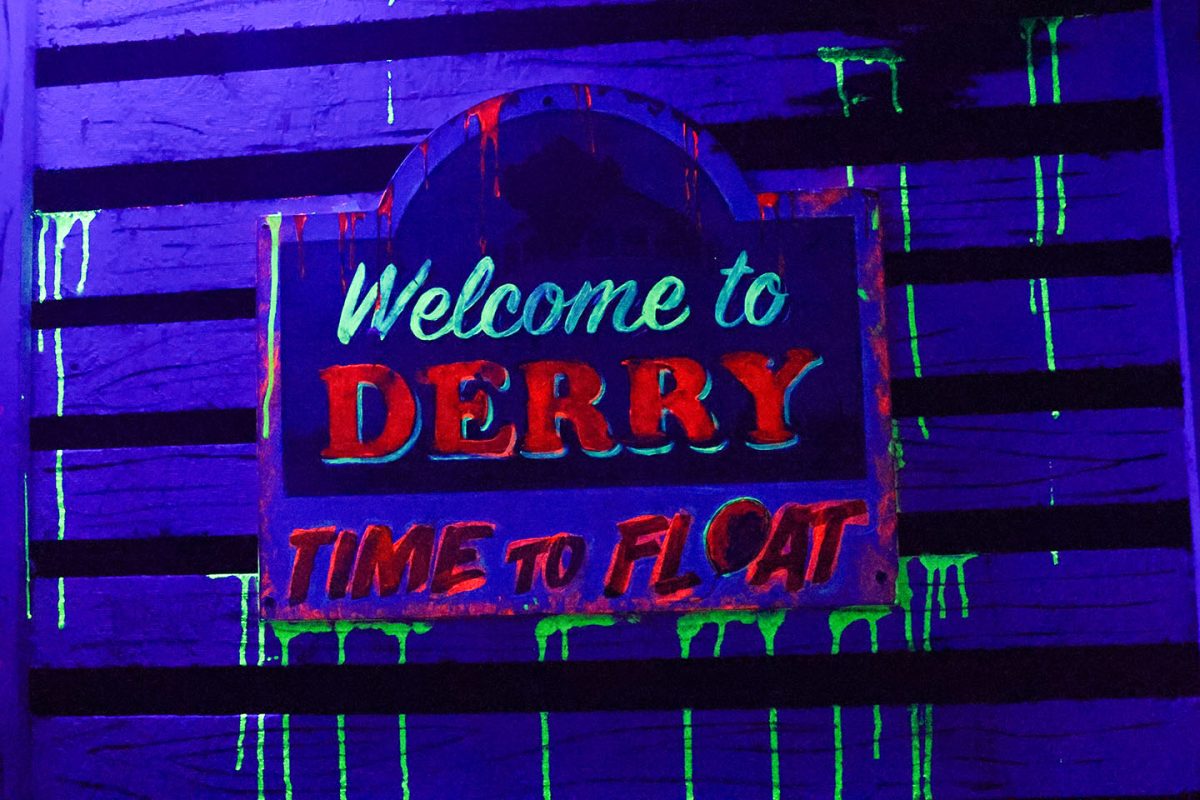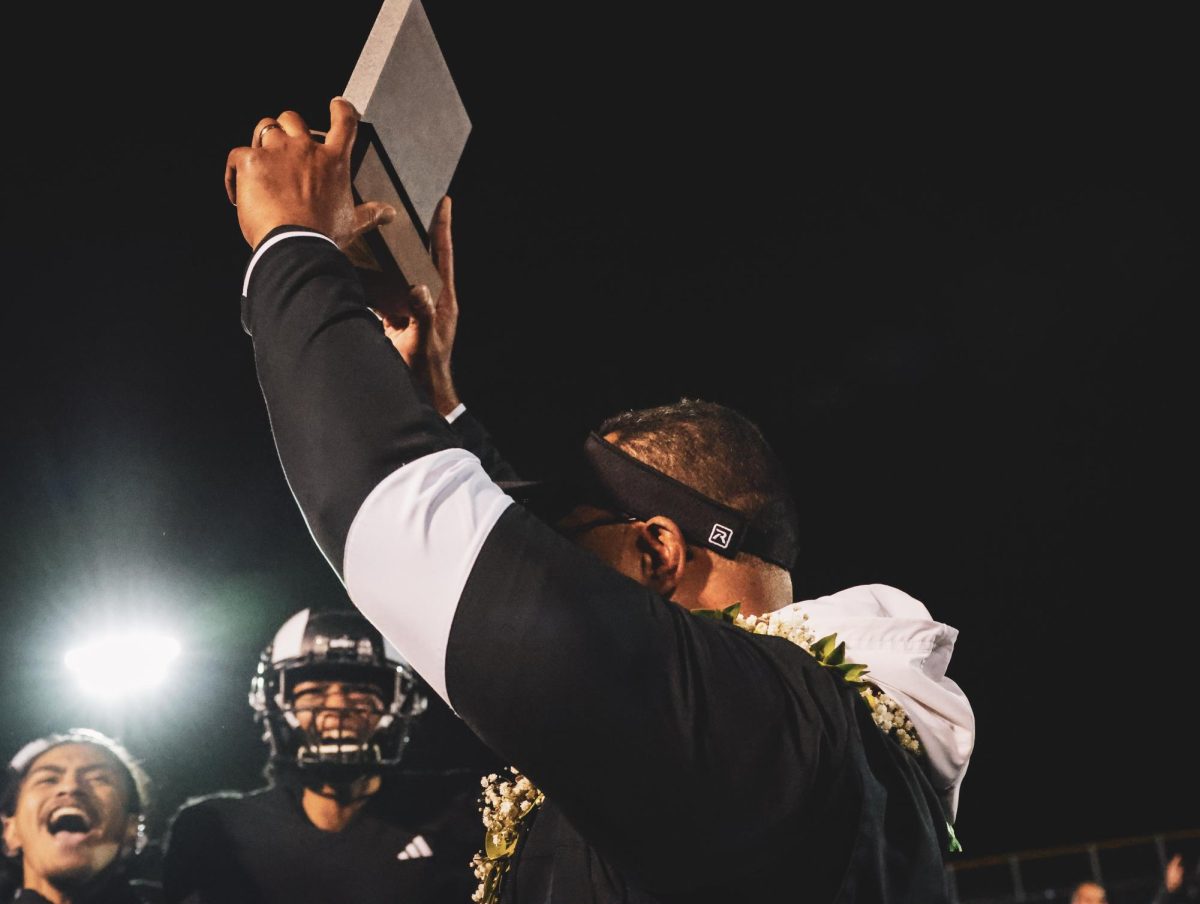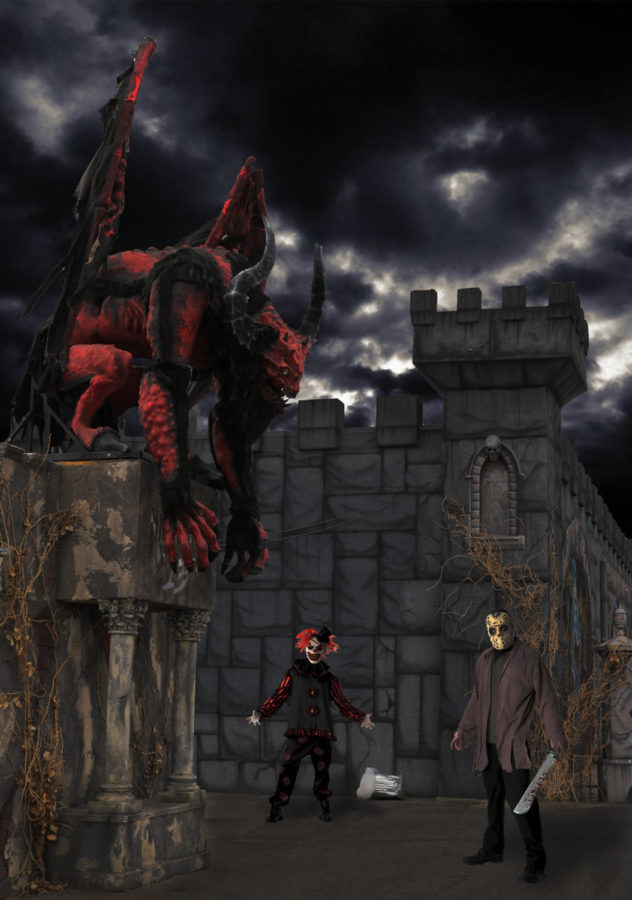Fear
October 27, 2017
A young girl is home alone for the night, with only her dog to keep her company. Her parents call to remind her to lock all of the doors and windows before she goes to bed. As she goes around checking the locks, she realizes that there is a window in the basement that won’t shut all the way. However, because she lives in a safe neighborhood, she decides to go to bed without worrying about it. She shuts her blinds and turns off the light, her room becoming pitch dark. She climbs into bed.
Before she falls asleep, she reaches under her bed to pet her dog and feels it lick her hand. She drifts off shortly after that.
Suddenly, a noise wakes her.
Drip. Drip. Drip.
It is coming from the bathroom down the hall. I’m sure it’s just a leak, she thinks, I’ll just go back to bed. Before she falls asleep, she reaches down to let her dog lick her hand for reassurance.
A few hours later she wakes again.
Drip. Drip. Drip.
This time she decides to investigate the sound. She climbs out of bed and quietly pads down the hall to the bathroom, the sound of the dripping growing louder and louder with each step. She feels uneasy, her breath quickening. When the bathroom light turns on, she shrieks.
Her dog is skinned and hanging on the towel rack. The dripping noise is its blood hitting the floor. Panic overtakes her body when she looks at the mirror, where HUMANS CAN LICK TOO is written in blood.
Most people will react to this classic scary story with disgust and fear. Underneath these negative emotions, however, often lies a morbid curiosity that leaves them wanting to hear more. In recent years, the entertainment industry has learned to capitalize on this curiosity. The horror genre, traditionally only mainstream during October, has become a year-round phenomenon what with the exponential growth of the production of horror films, TV shows, and video games. To paint a clearer picture, in 1990 approximately 200 horror films were released worldwide. By 2006, that number grew close to 900.
The main reason behind this boom is that fear sells and technology has become advanced enough to produce realistic, graphic images that truly scare us. And we love it. But why?
According to Margee Kerr, a sociologist from the University of Pittsburgh and author of the book Scream: Chilling Adventures in the Science of Fear, it has to do with a number of things. First of all, every time we are scared, our body goes into fight-or-flight mode and adrenaline is released. This adrenaline rush makes us feel stronger and more aware, and in controlled situations like scary movies or haunted houses this can be a positive experience.
“It’s up to us to interpret this response as enjoyable and not actually threatening– and that can happen very quickly. As soon as we realize that we’re not in fact going to die we can enjoy the arousal response,” Kerr said.
In other words, fear is only fun when we know that it can’t hurt us. On top of an adrenaline rush, it also allows us to build relationships and gain confidence because it makes us feel like we are conquering something, even though there is no actual danger.
“There’s nothing quite like defeating a horde of zombies in a haunted house or jumping out of a plane to make you feel like you can take on the world,” Kerr said.
Because of this, people have been scaring each other for fun for generations.
What started with simple folklore has turned into classics like Frankenstein and The Shining, and now, with incredible advances in technology, the entertainment industry has been pumping out horror blockbuster after horror blockbuster and making a lot of revenue in the process. Take The Conjuring for example. It was a movie that cost about $20 million to make, and grossed nearly $300 million worldwide. The statistics for other modern horror films are similar to this, illustrating their incredible profit potential as well as the human desire for a good scare.
“I think many people enjoy horror because they like to look into the lesser seen, taboo subjects of the world — the creepy, strange, and disturbing,” senior Mia Hunt said. “Horror showcases like movies, games, literature, and haunted houses embrace these things, giving a sense of controlled danger and a creepy atmosphere that is a lot of fun.”
However, this recent expansion of horror draws a few interesting implications. For instance, the chemical response to fear is very similar to that of drugs.
“The autonomic nervous system is activated in response to a threat (even a threat we may not be actively aware of) and adrenaline, noradrenaline, and cortisol are released into the bloodstream,” Kerr said. “Our respiration increases to fill our body with oxygen and our pupils even dilate to allow in more light so we can see any potential threats. This response to threat involves a lot of the same chemicals and neurotransmitters that are involved in other emotional states…like falling in love and being high.”
Thus, similar to drug tolerance, people can develop a tolerance to fear. This means that that more people are exposed to fear and graphic images, the more immune they become to these things, and overtime it becomes impossible to produce the same chemical response by using the same scare tactics.
So in order for someone to be truly scared, they need to be taken by surprise or see something more graphic and disturbing than they have ever seen before. As a result, many people in the horror industry are pushing the boundaries of what is socially acceptable in order to effectively create fear. TV shows like American Horror Story, horror games like Outlast, and even some haunted houses now feature more gore, sex, and violence than ever before.
This has led people to question the psychological effects of the disturbing images featured in horror entertainment. Some psychologists believe that it has played a big role in desensitizing society to violence and even morality, an argument supported by the recent clown fiasco. However, others suggest that it actually allows us to build empathy by exposing us to human suffering. This is the case for freshman and horror aficionado Olivia Warner.
“I watch [American Horror Story] for the shock value. It’s really gross, but I still watch it because it takes me away from regular life and allows me to watch other people experience crazy things,” Warner said. “I love the theatricality.”
Warner shows that horror can merely serve as something to break up the monotony of everyday life and a love for it does not necessarily imply that society is disturbed. For the majority of people, horror is similar to bungee jumping or a roller-coaster; it is a simple way to get a safe thrill and bond with friends.
So don’t be afraid indulge in fear this Halloween. Visit a lot of haunted houses, watch a lot of scary movies, and tell a lot of scary stories because these things can only serve to boost your self-esteem and bring you closer to that special someone.
Just make sure to keep an eye out for clowns.






























